





This article will introduce you to the most popular cultivars of beebalm, especially those which are award-winners and/or resistant to powdery mildew.
Beebalm, Monarda didyma, is perhaps the most showy members of the Mint Family. In April 2008, Lee Anne Stark (threegardeners) introduced us to this wonderful genus. This article is a follow-up to describe the many cultivars of beebalm that now exist.
The wild Monarda didyma is a native of eastern USA and southern Canada. In the wild, they have red flowers. In western parts of North America they are replaced by Monarda fistulosa, whose flowers are lavender to lilac shades. Modern-day cultivars, while mostly of M. didyma descent, probably have some genes from M. fistulosa, especially in the pink to lavender-coloured selections. Colours range from white through shades of pink, lavender, purple and red. The Royal Horticultural Society lists 84 cultivars of beebalm! Many of these are perhaps no longer in general circulation or are available only in Europe. German plant breeders have probably done more work on this genus than any other country. Not surprisingly, most of these have German cultivar names although some have been translated in English. A popular example is ‘Blaustrumpf’’ which is known in North America as ‘Blue Stocking’. In this article I will stick to the more popular cultivars, making a special reference to those cultivars which have won the RHS Award of Garden Merit.
The first cultivars of beebalm to win the coveted RHS Award of Garden Merit were in 1993 when 3 cultivars were selected. Among these was the old yet still popular cultivar ‘Cambridge Scarlet’ with deep scarlet flowers on 90 cm stems. ‘Beauty of Cobham’ reaches 90-110 cm and has purplish-pink flowers with contrasting deep purple calyxes. ‘Croftway Pink’ also grows to 90 cm with clear pink blossoms. Alas, all of these cultivars are susceptible to powdery mildew, the bane of beebalm.
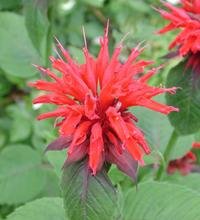
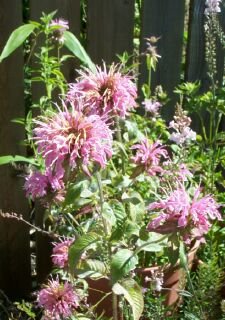
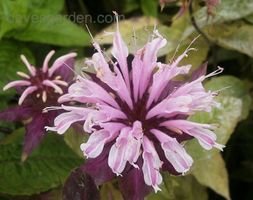
The first AGM beebalm winners were 'Cambridge Scarlet', 'Croftway Pink' and 'Beauty of Cobham'
The next group of AGM awarded beebalms were in 2001. These included ‘Gardenview Scarlet’, a giant selection reaching to 140 cm with bright red flowers and a bronzy calyx. Somewhat similar is ‘Squaw’, another bright red selection that reaches 140 cm. ‘Marshall’s Delight', a Canadian introduction with confirmed M. fistulosa genes, also won an AGM in 2001. This semi-dwarf cultivar reaches 75-90 cm with bright purplish-pink flowers. ‘Talud’ is the tallest awarded selection, reaching 150 cm. It has vivid magenta blooms. And finally, there is ‘Violet Queen’, a 140 cm selection with large pinkish-purple flowers. All of the 2001 award recipients exhibit good mildew resistance. There are many other equally attractive beebalms that have not won awards (oftentimes simply due to the fact that they have never been shown in RHS shows or trials).
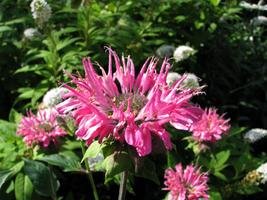
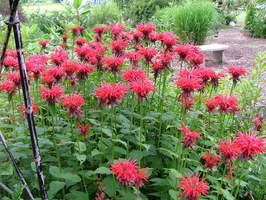
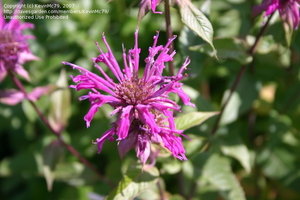
In the second round of AGM's awards went to 'Marshall's Delight', 'Gardenview Scarlet' and 'Violet Queen'
Within North American gardens, powdery mildew has been a perennial problem when growing beebalm so many North American breeders are aiming for mildew-resistant cultivars. The Morden Research Station in Manitoba, Canada was one of the premier beebalm breeders (as well as rose breeders; alas that breeding station is now closed). The earliest, mildew-resistant beebalm from the Morden station was ‘Marshall’s Delight’(1986), previously described. Perhaps their most famous selection was ‘Petite Delight’ (1998), the first-ever dwarf beebalm, reaching only 30-40 cm. At last a beebalm that was wind-tolerant! This rosy-pink selection is also mildew resistant. Their most recent releases, before the station was closed, were ‘Grand Parade’ (2001) a pinkish-purple selection reaching 40-50 cm and ‘Petite Wonder’, a super-dwarf version of ‘Petite Delight’ that reaches just 25 cm!
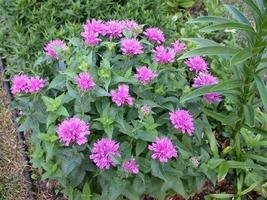
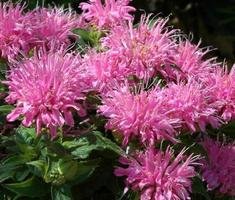
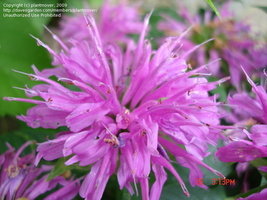
Among the Morden beebalm hybrids are 'Petite Delight', 'Petite Wonder' and 'Grand Parade'
Some additional worthwhile beebalm selections with good mildew resistance include ‘Blue Stocking’ (purple), ‘Coral Reef’ (coral-pink), ‘Jacob Cline’ (red), ‘Mrs. Perry’ (red), ‘Purple Crown’ (purple) and ‘Stone’s Throw Pink’ (pink). As a cut-flower or for the back-of-the-border, ‘Jacob Cline’ is one of my favourites as the plants reach a towering 150 cm.
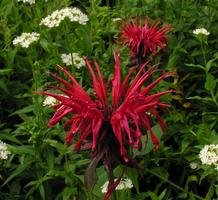
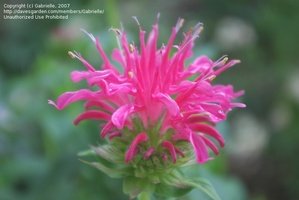
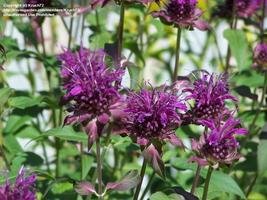
Other recommended beebalm include 'Jacob Cline', 'Coral Reef' and 'Blue Stocking'
If you are not familiar with this wonderful group of perennials, then you should try them. If you avoided them due to mildew problems, then try some of the cultivars noted above. Beebalm not only provide a mid-summer burst of colour, but are also attractive to bees and hummingbirds, make admirable cut-flowers and even provide delightfully fragrant foliage to boot!
I would like to thank the following people for the use of their photos: dawndoll2 ('Gardenview Scarlet'), echoes ('Petite Delight'), Gabrielle ('Coral Reef'), hczone6 ('Petite Wonder'), Joy ('Croftway Pink'), KevinMc79 ('Violet Queen'), Kruch72 ('Blue Stocking'), plantmover ('Grand Parade') and saya ('Beauty of Cobham').
Bee Balm, Beebalm, Bergamot, Firecracker Plant, Horsemint, Mountain Mint, Oswego Tea
Bee Balm, Beebalm, Bergamot, Firecracker Plant, Horsemint, Mountain Mint, Oswego Tea Jacob Cline
Lemon Mint, Lemon Balm, Purple Horsemint, Lemon Bee Balm, Beebalm
Bee Balm, Beebalm, Bergamot, Firecracker Plant, Horsemint, Mountain Mint, Oswego Tea Raspberry Wine
Hawaiian Ti Plant, Good Luck Plant, Ti Plant Colorful Ti Cultivars
Copyright © www.100flowers.win Botanic Garden All Rights Reserved